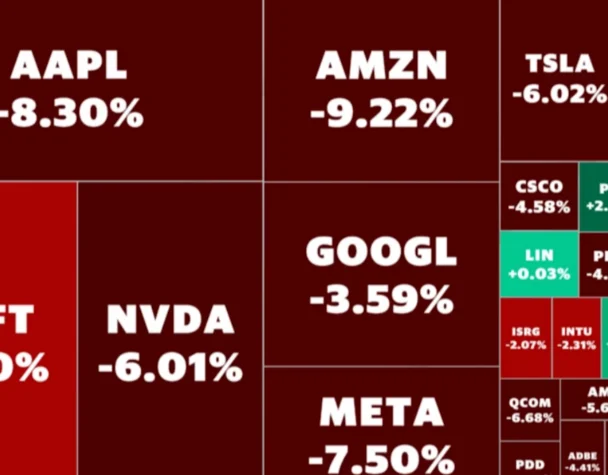
S&P 500 Suffers Worst Day Since 2020: What to Expect Next Trading Session
Fri, April 04, 2025S&P 500 Nosedives Amid Trump Tariff Turmoil
On April 3, 2025, the S&P 500 closed at 5,396.52, posting a dramatic 4.84% loss, its worst single-day percentage drop since June 2020. The sharp decline came in the wake of former President Donald Trump’s surprise announcement of sweeping new tariffs—a 10% baseline on all imports and a total 54% levy on Chinese goods.
The market reaction was swift and severe. The broader downturn also dragged the Dow Jones Industrial Average down 1,679 points, while the Nasdaq shed nearly 6%, wiping out approximately $3.1 trillion in market value across U.S. equities.
This move signaled investor fears of a potential trade war, supply chain disruptions, and inflationary pressure that could ripple through global markets. President Trump, however, defended the move as necessary to “bring manufacturing back home” and assured the public that the markets are “going to boom” once the new trade framework is in place.
Read more about the tariff policy’s broader implications in this New York Post report.
What to Expect in the Next Trading Session
As markets prepare to reopen, early futures trading shows continued volatility, with the potential for additional losses if investor sentiment remains sour. Economic analysts are warning that the next few sessions could see wild swings as traders reassess corporate earnings expectations, supply chain exposure, and inflation risk.
Goldman Sachs has already lowered its short-term S&P 500 forecast, projecting a 5% decline over the next three months. While the firm still sees a 6% gain over the next year, it has raised the probability of a U.S. recession to 35% due to expected consumer pullbacks and higher input costs for companies. Business Insider reports that the new tariffs could also significantly affect earnings growth, particularly for multinationals with large international revenue exposure.
Defensive sectors—such as utilities, healthcare, and consumer staples—are likely to be more resilient in the short term. Meanwhile, tech and industrial stocks could bear the brunt of increased trade barriers and global supply chain volatility.
Global responses may also influence market direction. Countries like Canada and those within the European Union are preparing retaliatory tariffs, which could escalate tensions further. Investors should keep an eye on diplomatic developments, central bank responses, and corporate guidance in the days ahead.
For insight into how much further stocks might fall, check out this Barron’s analysis.
As uncertainty reigns, cautious optimism is in short supply. Traders are advised to prepare for a bumpy ride, with attention focused on Washington, Beijing, and Wall Street earnings calls that may shed more light on the road ahead.

